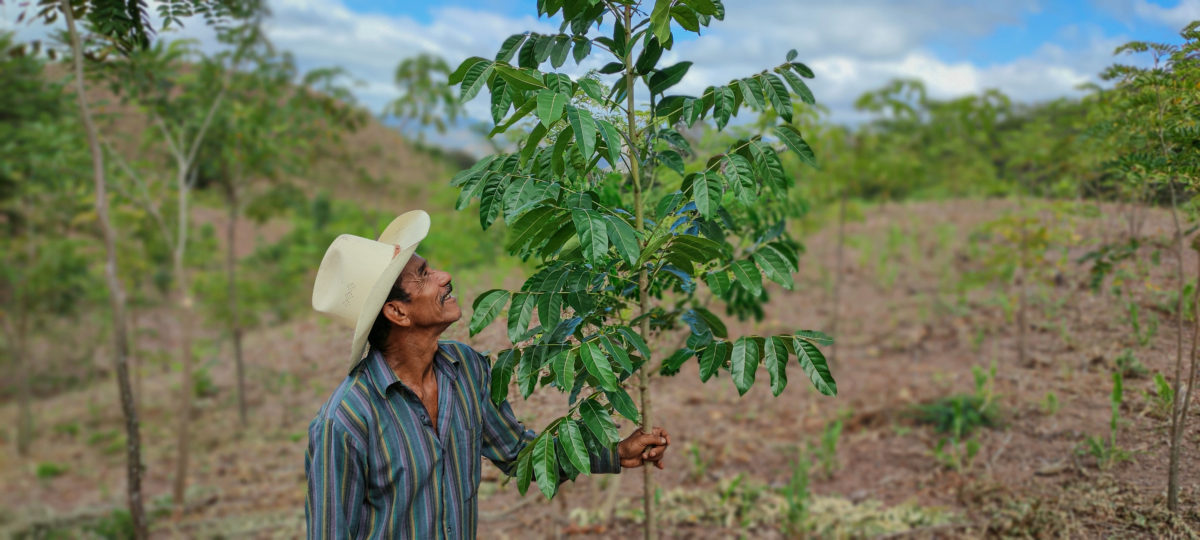This article was originally published on the World Economic Forum’s website on September 20, 2023.
We’re losing the world’s forests, and we’re losing them fast. Between 2015 and 2020, the rate of deforestation was estimated at 10 million hectares per year. That’s roughly the size of Portugal. The issue is far from abating, with recent data showing that tropical primary forest loss in 2022 alone totaled 4.1 million hectares. That’s 10% more than in 2021.
It’s important to recognise the enormity of the problem. Yet it’s arguably more important to seek solutions. We need forests. They provide habitat for wildlife, stabilise the soil, and replenish aquifers. They sustain rural livelihoods, sequester carbon, and purify water. As a planet, we are dependent on forest ecosystems. Their continued degradation threatens us all.
Forest restoration
One solution is to grow trees where forests once stood. When done correctly, forest restoration can bring about overwhelmingly positive impacts for nature, for climate, and for local land stewards. But first, it is necessary to consider why these forests were degraded in the first place.
For example, small-scale agriculture accounts for 68% of agriculture-driven deforestation worldwide. Farmers choose to cut down trees because of the short term incentives they can receive. Yet it goes both ways. If small scale farmers are drivers of deforestation, they can also be major drivers of forest restoration if they can improve their livelihoods by growing trees.
Working with smallholders are one example, but the exact specifics of initiatives must be tailored to the environmental, economic, and social factors that exist in each locale. Taking Root has recently become a supporting partner on the Trillion Trees: Restoration at Scale Challenge to help identify and support innovators working to scale up restoration efforts. In that vein, we wanted to share five overarching principles which together build a framework for forest restoration at scale:
1. Build for community livelihoods
In recent history, growing trees hasn’t been a viable land-use option for many of the world’s land stewards. Instead, agriculture and commodities have provided the primary sources of income. This has led to widespread forest loss, with agricultural expansion on forests between 2000 and 2018 accounting for almost 90% of deforestation.
Forest restoration efforts must reverse this trend. That means building for livelihoods so that communities have the motivation to grow trees, and to keep those trees in the ground. Payments for ecosystem services provide short-term incentives, while access to forest value chains can deliver ongoing benefits over the medium to long-term.
Securing new livelihood opportunities for communities is one of the most effective ways to bring about lasting impacts. Ultimately, it must make economic sense for people to make the decision to grow trees. Otherwise, land stewards and communities can ill afford to veer from intensive agricultural production.
2. Investment and funding
It costs money to start, manage, and scale a forest restoration project. Carbon financing is one possible option if removal credits are priced appropriately. It takes time and energy to grow trees, and the payments given to those growing trees must hold sufficient value. Only then will the outcomes be equitable, encouraging more land stewards to join a project.
Furthermore, upfront investment is essential to see a project through the design and certification phase, before carbon revenue is being generated. Without this input, forest restoration projects may struggle to come into existence, let alone scale. If so, the plethora of impacts associated with nature-based solutions can never be realised.
3. Capacity building in the local team
Forest restoration projects are complex undertakings that demand a skilled project implementer on the ground. This team plays a pivotal role in ensuring that restoration efforts maintain operational quality and adhere to the project’s certification standard, especially when it comes to silviculture practices, mapping, monitoring, and recruiting and supporting farmers.
Investing in the local team’s capacity is therefore key, as it equips project implementers with the knowledge and agency needed to manage the project on a day-to-day basis. This approach ensures that restoration projects can scale efficiently while retaining quality, leading to more successful and impactful forest restoration initiatives.

4. Verifiable impacts
Forest restoration projects must be able to demonstrate verifiable impacts to instill confidence in their effectiveness. This requires a rigorous approach to monitoring, reporting and verification (MRV) to track progress, and to guarantee transparency and accountability. Building trust in the market is crucial if we are to expand restoration efforts and create more impact.
Maintaining rigour across thousands of hectares of land can be challenging, which is why the development of a technology-enabled approach is so important. By leveraging technology, project developers can easily collect and manage the data required to report on projects and carbon sequestration, even as a project scales.
5. More high-quality projects
The acceleration of global forest restoration necessitates the emergence of new high-quality projects. There are still vast expanses of degraded land that are suitable for interventions, provided they have the support of local land stewards and communities. These projects require financial input, including upfront investment, to bring them to life.
Each new project must be thoughtfully designed to create lasting impacts for the environment and communities. With careful planning and execution, these initiatives can combine community engagement, adherence to carbon standards, and durability – all while maintaining the bar of quality. The triple planetary crises we currently face demands this action, and demands it now.